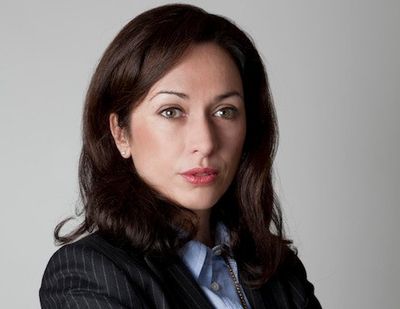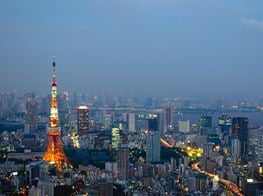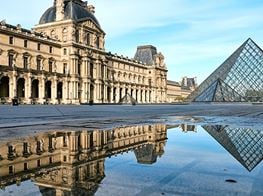Florence Derieux

Formerly a curator at the Palais de Tokyo in Paris, as well as the deputy director of the Picasso museum in Antibes, Florence Derieux has been the Director of FRAC Champagne-Ardenne since 2008, which conceives and produces exhibitions of contemporary art, and organizes educational activities and events to engage the public in contemporary art. Derieux has curated projects worldwide, most recently the first major survey of work by Agnes Denes in Western Europe at Firstsite, Colchester, UK, and has authored several books, essays and articles on the subject of contemporary art and artists. In 2006 to 2007, she served as Associate Curator of Le Magasin-Centre National d’Art Contemporain in Grenoble as well as a tutor at the Ecole du Magasin’s International Curatorial Training Programme, where she directed the publication, Harald Szeemann: Individual Methodology
(JRPIRingier, 2008). In 2013, Derieux was appointed the curator of the Parcours sector for Art Basel in Basel, which engages the city's historical quarters with site-specific sculptures, interventions and performances by renowned international artists and emerging talents. Returning in 2014 to curate the sector once again, Derieux discusses her plans for this year's edition.
First, I wanted to ask you about the process of curating Parcours – how do you work with the fair in terms of selecting artists to work with? Given that Parcours projects are site-specific, this question also relates to how you work with the city of Basel, its sites and spaces, in that Parcours is really the public section of Art Basel.
My role as the Curator of Parcours is to select projects amongst all those proposed by the galleries participating in Art Basel. Each year, Art Basel selects a different historical area of the city of Basel to develop Parcours: Münsterhügel in 2010, St. Alban Tal in 2011, St. Johann in 2012, and Kleinbasel in 2013 and 2014. I visit the chosen area and, together with the production team, we identify the potential locations where the artworks can be presented. I work extremely closely with the artists and the galleries to not only present an artwork in one location but to truly anchor the work within the city.
Are there spaces and sites you have worked with that have particular importance to you, or are there spaces that you would like to have engaged with, but couldn't?
The main difficulty is that sometimes we can’t have access to or permission to use some of the locations that we identified. We then need to look for alternative possibilities until we find an even better solution. More than the spaces or sites themselves, the relations that we create with the different partners are important to me.
Could you talk about the selection of artists for this year's Parcours, and of course, the programming for Parcours Nights?
On Parcours Night, on Wednesday evening, we’ll start with the screening of Mario Garcia Torres’ visual and musical essay at the kult.kino cinema at 8.30pm and a spectacular requiem by Guido van der Werve in the St Clara church at 10pm whose film is being presented as part of Unlimited.
Then we have 13 more projects to discover: Francesco Arena’s performance inspired by the presence of Nietzche in Basel; Darren Bader’s performed installation; Gottfried Bechtold’s large installation; Pierre Bismuth’s night and day performances; Jean-Luc Blanc’s painting; Chris Burden’s folly; Ryan Gander’ series of posters; Mark Handforth’s monuments to the symbolic memory of superstition; Iman Issa’s proposal for a public sculpture; Eva Rothschild's monumental sculpture; Zeng Fanzhi's giant plum tree branch.
How would you say this year's Parcours programme differs to the last?
Because the artists and the locations are very different, the two editions are very different. Now in my second year, my knowledge of the city and my proximity with the team of Art Basel enabled me to work even more closely with the artists and the galleries and the partners in order to develop artworks that will truly exist within the city itself, exploring and revealing its past and present history. Francesco Arena’s project, for instance, is directly inspired by the past presence of Nietzsche in Basel. Other works are adapted to the configuration of this part of the city, like the sound work by Seth Price, which will be heard in multiple places of consumption and leisure, every working day. There are no real differences between the editions, but we are more and more heading towards an exploration of how the works presented in Parcours find their place in social life.
There is always this challenge when dealing with an annual exhibition such as this is always to bring something new and fresh to Parcours – could you talk about how you have approached this as a curator? I'm thinking here of last year's wonderful presentation of a Joep Van Liefland video palace in a storefront window, a personal highlight of the 2013 Parcours!
When I visited this year’s area for the first time, all I could see was a succession of small bars, restaurants, and hairdressers! I was a little worried because we couldn’t really find any room with exhibition qualities. Later, I found out that this was a great opportunity as it forced me to select projects that, just like the work by Joep van Liefland, are truly anchored within the city and become part of the everyday life of its inhabitants and visitors.
How has your experience as a curator and the many projects you have engaged with in your career, influenced your approach to curating Parcours?
I feel that my experience as the Director of the FRAC Champagne-Ardenne has prepared me in ways that I couldn’t have anticipated. Managing an institution that operates in a whole region of a country isn’t about curating shows and writing texts. Most of the time, it’s about engaging with very different sorts of people, in very different types of contexts. It’s about making art part of society.
My final question is one I posed to Phil Tinari on his curating of the China Focus at the last Armory Show in 2014 – how might you compare and contrast the experience of curating a show for an art fair as opposed to an institution such as a museum?
With Parcours, I’m of course working within the context of an art fair, but also in the city of Basel. And Art Basel isn’t like any other fair. In Basel, it provides all the institutions (museums, art centres, schools, etc...) with an unparalleled visibility and coherence; it’s a leading force. I also believe that no other fair in the world has created such a daring and generous response to the public’s ever-growing interest in site-specific and performative works. I’m most interested in how Parcours can provide artists and audiences a different context for the creation, exhibition and reception of artworks within this context. Parcours responds to a renewed desire for challenging forms of interaction with art. For me, it is particularly interesting to observe how the works presented in this geographical and temporal framework find their place in social life. —[O]













































































































































































